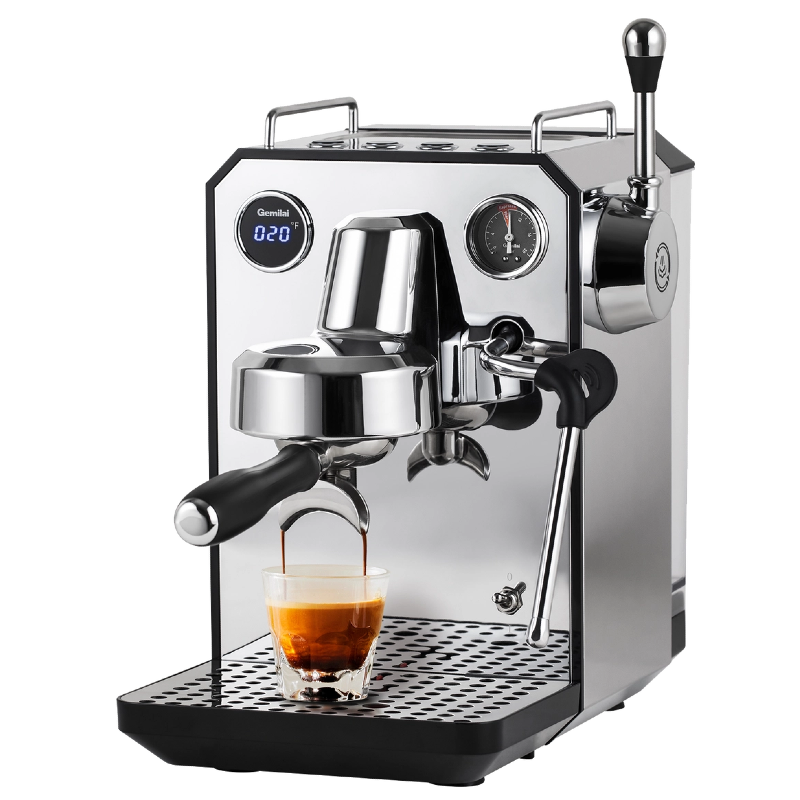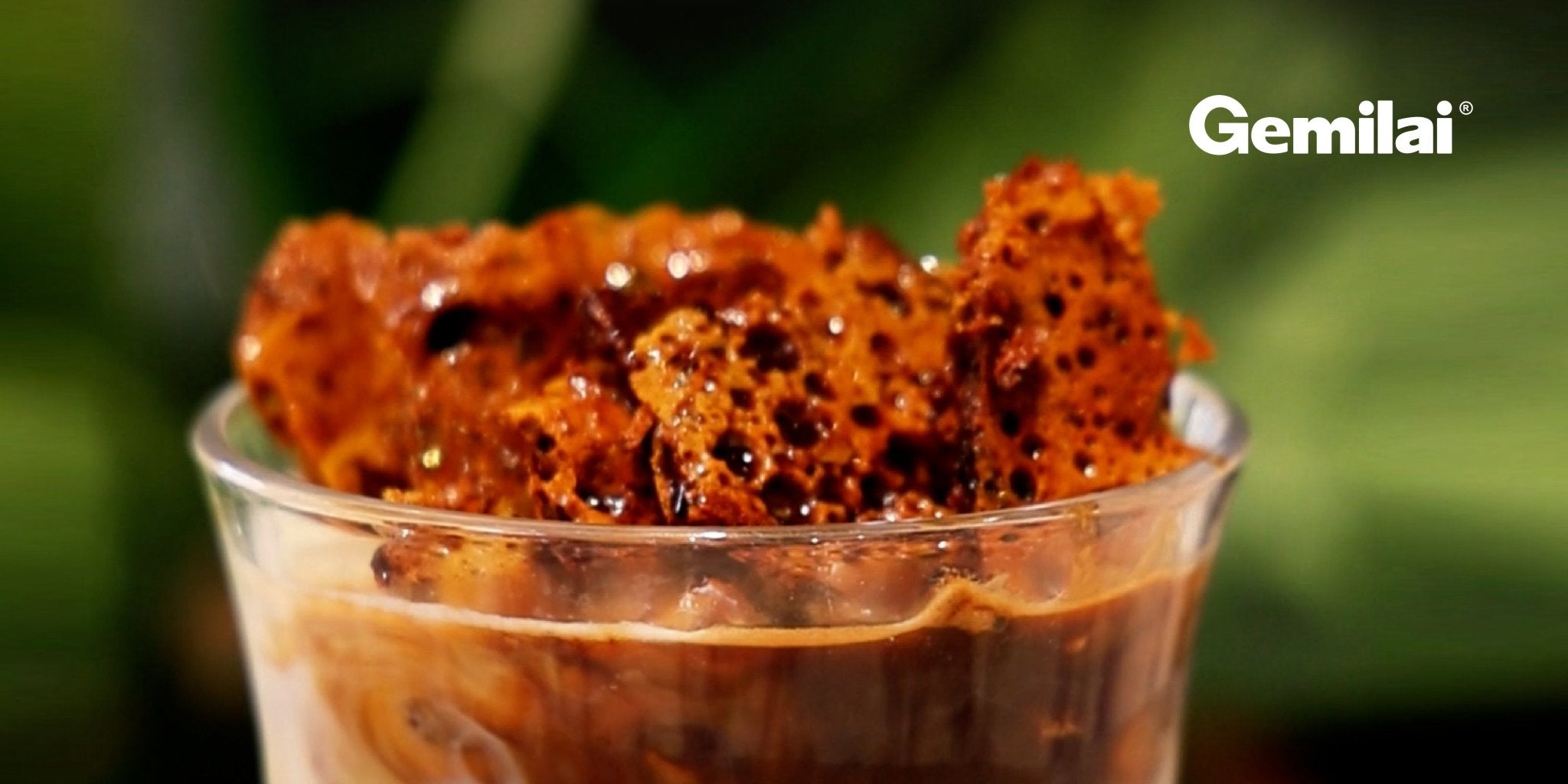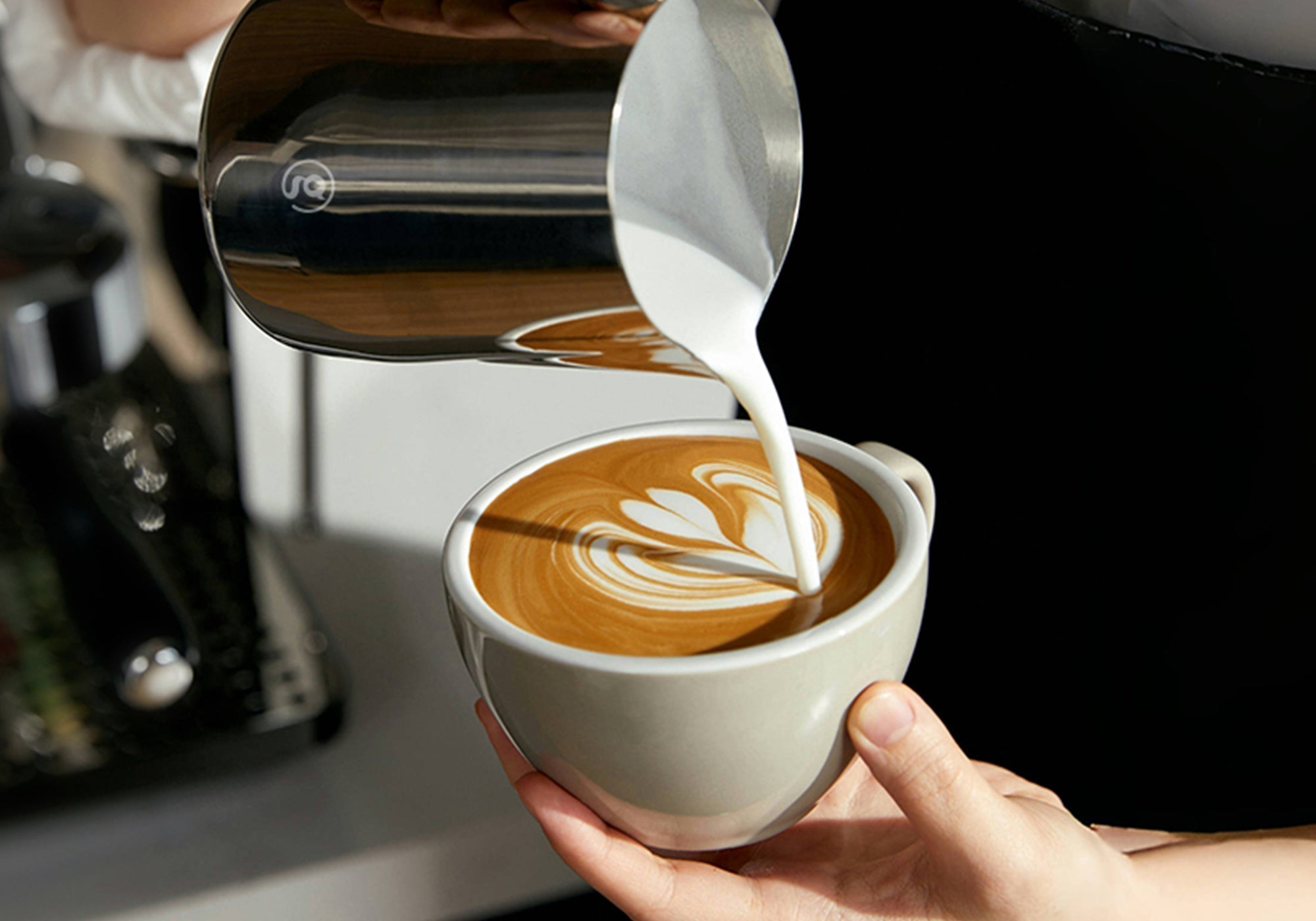Shop
Beginner's Guide: How to get Started with an Espresso Machine
If you’ve just purchased your first espresso machine and don’t know where to start, learning to use it can seem a bit intimidating. This guide will walk you through everything you need to know to get started, from the preparation to your first shot.

Get to know your machine
Before you can get started with pulling your first shot, spend a bit of time getting to know the different parts of your machine. Every machine will be different, and understanding the quirks of your machine will be vital. Most have the same main parts:
- Water tank: Where water is stored and heated
- Portafilter: A handheld filter holder that holds ground coffee for brewing
- Group head: Where hot, pressurized water is pushed through the portafilter
- Steam wand: Used for frothing milk
- Pressure Gauge: Monitors water pressure during extraction
Setting Parameters
Many espresso machines have different ways to set parameters, often listed in the manual. It’s a good idea to check or set your basic machine parameters. These settings can make a big difference in how your espresso turns out.
- Temperature: Most espresso machines heat water between 190°F and 205°F (88°C–96°C). Lower temperatures result in a brighter flavor while higher temperatures create deeper, richer flavors.
- Pressure: Keeping the pressure at 9 bars is ideal. Most machines are preset to this pressure.
Preparing the machine
Espresso machines perform best when fully heated. Fill the water tank and preheat the machine and let it warm up for 10-20 minutes. Lock the empty portafilter into the group head while heating to keep it warm too. Run a bit of hot water through to preheat the entire system and purge. You can also preheat your cup with hot water or on the machine’s cup warmer.
Choosing your coffee grounds
A great espresso starts with great beans. For the best flavor, use freshly roasted, high quality espresso beans and grind them just before brewing. Of course, if you’re not comfortable grinding them yourself or don’t have enough time, pre ground beans are also an option, although freshly ground will usually give you the best result. Espresso machines work best with fine ground beans: too coarse, and your espresso will taste weak, watery, and sour; too fine, and it can turn out harsh and bitter. As always, it's best to experiment with what kinds of coffee beans you prefer and with what grind size.
Tamping your coffee grounds
Once you have your ground coffee, scoop it into the portafilter and use a tamper to press it down evenly and firmly. Try not to press too hard: press just enough to make the coffee flat and even. This helps water flow through smoothly for an even tasting espresso. A single shot typically uses ~9-12g while a double shot uses ~17-20g.
Pulling your espresso shot
Lock the portafilter into the machine and start the shot.
Some good goals to look for:
- Time: Most shots pull for 25-30 seconds. Control the time by adjusting the fineness of your coffee grind (finer for a slower shot, coarser for a faster one).
- Powder to liquid yield ratio: 1:2-2.5
You’ll see dark espresso come out first, then a lighter golden brown color on top called crema. This is a sign that you have a good pull.
Frothing the milk
If you prefer to add milk, now is the time to use the steam wand. Set the steam wand away from the center of the pitcher, but not too close to the edge (aim towards the 3 o'clock direction and place the nozzle head just below the liquid surface). If it is buried too deep, it will be difficult to incorporate air, and if it is buried too shallow, the milk might splatter out easily. Keep your hand steady during the frothing process and try to avoid making adjustments. A hissing sound means you’re steaming correctly, while a sharp noise indicates the wand is submerged too deeply.
Conclusion
Learning espresso at home takes a little patience, but it’s super rewarding once you pull a great shot. It’s important to start simple and take your time. Learn about and explore your preferences, whether that's for the type of beans, the grind type, or how long to pull your shot for. Don’t be afraid to make mistakes! With a bit of practice and patience you’ll be making high quality espresso in no time.









Leave a comment
This site is protected by hCaptcha and the hCaptcha Privacy Policy and Terms of Service apply.